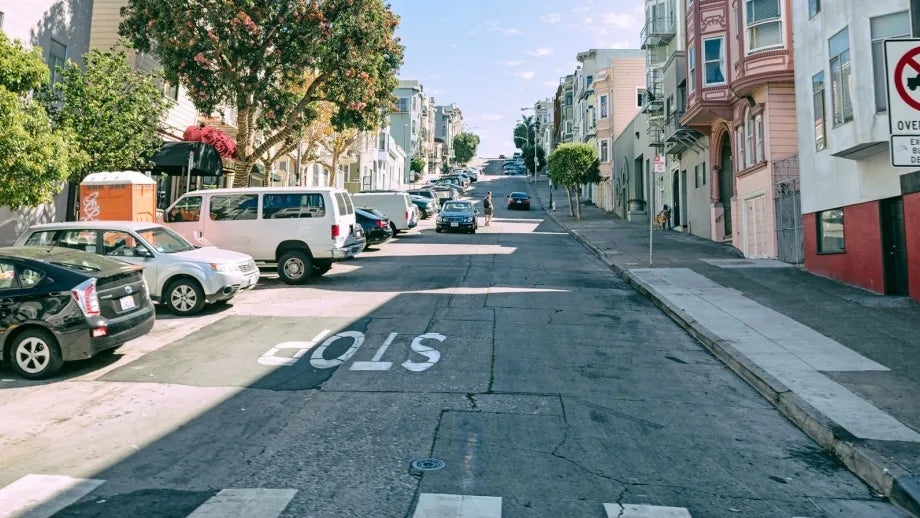San Francisco Streets Face Steep Climb To Reach Pavement Quality Goal
The streets of San Francisco may be smoother than those in the Bay Area’s two other major cities, but still rate no better than “fair.” Data released today by the Metropolitan Transportation Commission (MTC) show the average pavement condition index (PCI) score on the city’s more than 2,100 lane-miles of streets rose one point last year to 67 out of a maximum possible 100 points, as calculated on a three-year moving average basis. This compares to a regional average of 66, and easily tops the three-year scores logged by San Jose (62) and Oakland (57).
“San Francisco's streets — like those in many communities — are worn down and filled with potholes due to decades of underinvestment,” noted San Francisco Supervisor and MTC Commissioner Scott Weiner. “If we want good roads, we have to pay for them. Local governments need to step up, we need more regional funding, and the state and federal government need to fix their broken gas tax formulas."
PCI scores of 90 or higher are considered “excellent.” These are newly built or resurfaced streets that show little or no distress. Pavement with a PCI score in the 80 to 89 range is considered “very good,” and shows only slight or moderate distress, requiring primarily preventive maintenance. The “good” category ranges from 70 to 79, while streets with PCI scores in the “fair” (60-69) range are becoming worn to the point where rehabilitation may be needed to prevent rapid deterioration. Because major repairs cost five to 10 times more than routine maintenance, these streets are at an especially critical stage. Roadways with PCI scores of 50 to 59 are deemed “at-risk,” while those with PCI scores of 25 to 49 are considered “poor.” These roads require major rehabilitation or reconstruction. Pavement with a PCI score below 25 is considered “failed.”
The complete 2015 Bay Area Pavement Conditions Summary — including percentages of local roadways in “excellent” or “very good” and “poor” or “failed” condition, and a listing of average PCI scores for the arterials, collector roadways and residential streets — in all Bay Area counties and cities is available at http://mtc.ca.gov/tools-and-resources/digital-library/pavement-condition-bay-area-jurisdictions-2015.
MTC’s Vital Signs website www.vitalsigns.mtc.ca.gov/street-pavement-condition provides even more detailed information on pavement conditions in each of the Bay Area’s nine counties and 101 cities, including both block-by-block analysis and a record of every municipality’s average PCI score for each year from 2003 through 2015. Those interested in a deeper look at the challenges facing the region’s local street and road network are invited to visit the MTC website at www.mtc.ca.gov/whats-happening/news/street-fight-overview and click on the link for a 2014 multimedia piece entitled “Street Fight: The Ongoing Battle for Better Bay Area Pavement.”
MTC is the transportation planning, financing and coordinating agency for the nine-county San Francisco Bay Area.
Contact: John Goodwin, 415-778-5262 or (415) 778-5262

